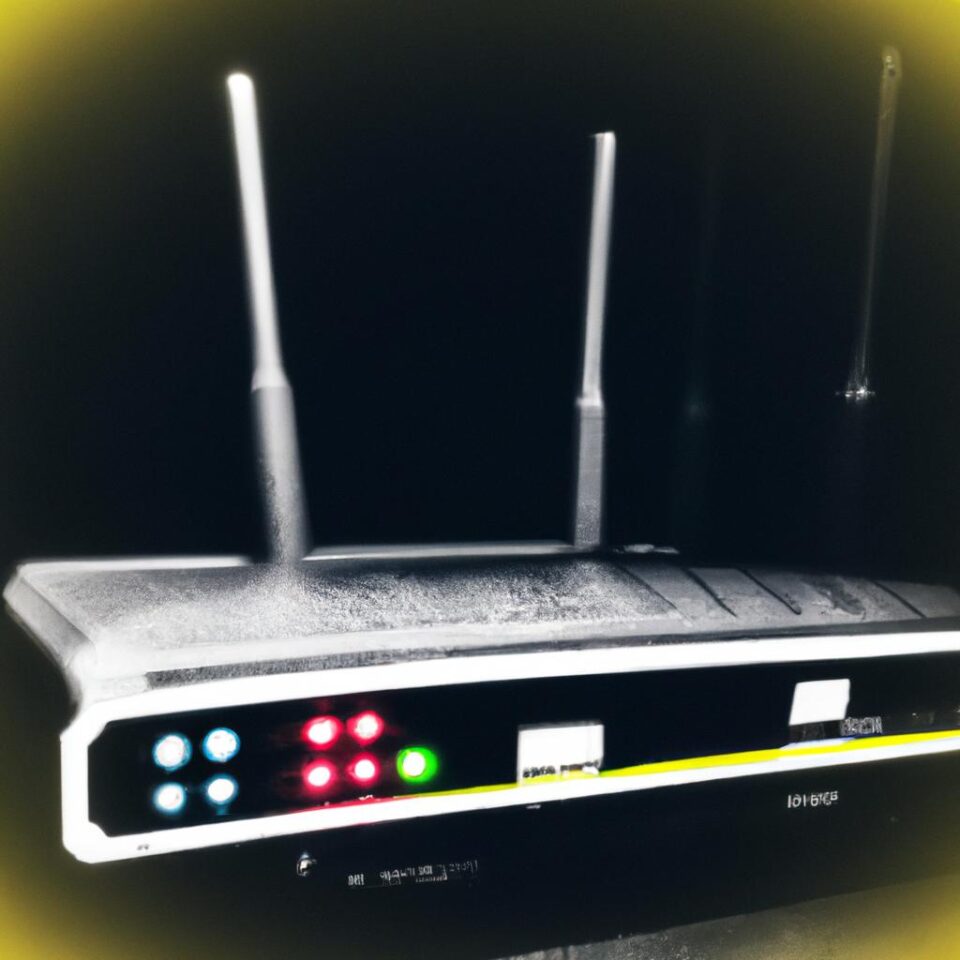Introducing Edge Computing
Edge computing is a way of bringing computation and data storage closer to the source. By deploying servers, cloud services, and networks at the edge of the network, edge computing enables quick response times and reduces latency. Edge computing allows for more efficient computing power distribution that can handle intensive applications such as control video and audio streaming, allowing businesses and organizations to benefit from faster results and improved user experience.
The emergence of edge computing has been driven by the rapid growth of the Internet of Things (IoT), which require low latency and high bandwidth. Edge computing is a crucial part of the IoT as it allows data to be processed quickly and securely without having to send it back and forth to a remote datacenter. It also allows real-time insights and decisions to be taken quickly, ensuring better efficiency, performance, scalability, and cost savings.
Edge computing is becoming increasingly important as the demand for powerful computing increases, and it is being deployed in many industries including healthcare, automotive, video streaming, and more. Since edge computing brings computing power closer to the source, it has the potential to revolutionize how businesses process and analyze data, and can provide a critical competitive advantage.
Edge Computing Benefits
In today’s digital world, businesses are looking for faster and more efficient ways to process data. Edge computing is an innovative way for companies to do just that. It brings computing power closer to the source, allowing data to be processed more quickly and securely.
By bringing computing power closer to the source, edge computing has many advantages for businesses. These include:
- Reduced latency and improved responsiveness – By processing data closer to the source, there is less lag time in the system. This means faster response times and more efficient operations.
- Increased scalability – Edge computing allows companies to scale their computing power as needed, allowing them to keep up with customer needs and demand.
- Increased security – Since data is processed closer to the source, it can be secured and monitored more easily. This reduces the risk of data breaches, and makes it easier for companies to meet industry standards and regulations.
- Reduced costs – By utilizing edge computing, companies can reduce their need for additional hardware, such as servers. This helps reduce the cost of operating their business.
- Improved user experience – With faster response times, businesses can offer a better user experience to their customers. This helps increase customer satisfaction and loyalty.
As you can see, edge computing has many benefits for businesses. With its ability to reduce latency and costs, increase scalability and security, and improve user experience, edge computing is becoming an increasingly popular choice for businesses looking to gain an edge in the digital age.
Edge Computing Use Cases
Edge computing is becoming increasingly popular in the technology sphere, offering advantages such as increased performance, lower latency, and reducing reliance on cloud infrastructure. This makes it ideal for businesses that need to process large amounts of data quickly. Nowadays, edge computing is being used in a variety of contexts to boost efficiency in areas such as video streaming, virtual reality, and gaming.
One of the most widely used applications of edge computing is real-time video streaming. With traditional streaming services, videos are processed in the cloud before they can be streamed to a user’s device. Edge computing, on the other hand, allows video streams to be processed closer to the source, resulting in faster streaming speeds and a higher quality viewing experience.
Another example is Virtual Reality (VR). VR can be computationally intensive, and with edge computing, users can experience the most immersive VR experience possible, as the computation is processed and relayed back to their devices faster. This is especially beneficial for gaming applications where accuracy, speed, and quality are key.
Lastly, edge computing has also been used in the retail industry. By deploying edge computing, retailers can move away from traditional POS systems and the associated hardware and software costs. Instead, edge computing allows transactions to be processed much faster, in real-time with fewer errors, which is particularly beneficial during peak periods.
Considerations for Adoption
As organizations look to implement edge computing, there are some key considerations that need to be taken into account. Firstly, businesses will need to factor in the cost of new hardware and cloud infrastructure that is necessary to support edge computing. This can be a large financial burden, particularly for smaller enterprises.
Additionally, organizations should make sure they have the resources and expertise necessary to successfully implement and maintain edge computing. Setting up an edge computing solution requires specialized knowledge and experience, so companies should ensure they have the right personnel to handle these tasks.
Organizations must also weigh the potential benefits against any risks associated with the technology. Edge computing can potentially introduce security vulnerabilities to an organization’s network, leaving them exposed to malicious actors or data breaches. Entities should consider the risks carefully before adopting edge computing.
Finally, it’s important to note that many edge solutions are designed to operate in environments that are difficult to monitor and maintain, which can impact the reliability of the set-up. Companies should consider the complexity of their target environment and whether they have the personnel and expertise necessary to properly manage edge computing deployments.
Serverless computing is a cloud computing model that allows businesses to execute code without the need for a server. Unlike traditional cloud computing, it provides businesses with the ability to build and run applications and services without needing to manage and administer any underlying infrastructure. This makes it an attractive option for businesses looking to reduce overhead costs and time to market. The primary benefit of serverless computing is that it can run anywhere, from the edge of a network to an important on-premise data centre. This makes it ideal for use cases that require low latency and rapid responses, such as real-time data processing, IoT applications, image and video recognition, and digital asset management.
Serverless computing brings considerable advantages when it comes to edge computing. By allowing businesses to run applications and services close to their source, be it devices or users, it eliminates the need for a centralized server running in the cloud. This significantly reduces latency, and ensures that applications and services receive the data they need in near real-time. Additionally, serverless computing is an attractive choice for edge computing because it requires little maintenance or administration work, giving businesses more time to focus on developing innovative applications and services. Finally, serverless computing provides reliable scalability options, allowing businesses to react quickly and easily to changes in data demand at the edge.
Security Considerations for Edge Computing
When it comes to edge computing, it is necessary to consider the security risks associated with its use. Data is processed closer to the source with edge computing, meaning unauthorized actors may have a greater chance of accessing sensitive data. This necessitates a robust security strategy that encompasses both hardware and software components.
To secure hardware, edge devices must be equipped with physical security layers such as locks, cages, barriers, motion sensors, or access control. Additionally, strong passwords and authentication protocols should be in place to prevent unauthorized changes to the system. Software security measures include encryption, firewalls, malware detection, and intrusion detection systems.
It’s also important to ensure that edge computing networks are regularly monitored and updated. Keeping track of all edge devices is essential for detecting any security breaches, as well as any suspicious activity. Ensure your network is backed up regularly, and that you’re always aware of any potential vulnerabilities.
Finally, it’s essential to educate all users of edge computing devices on security best practices. Make sure they are aware of the importance of strong passwords and following proper authentication protocols. Are there procedures in place to quickly respond to any security incidents?
By understanding and addressing the security risks associated with edge computing, businesses can securely reap the benefits of this technology without sacrificing their data security.
Edge computing is an innovative approach to computing that enables businesses to bring computing power closer to the source. This means that data processing and analytics can take place within the network, eliminating the need for direct communication with the cloud or other backend systems. Edge computing has revolutionized the way that businesses use and interact with connected devices; by allowing for real-time analysis and data processing, companies can make decisions faster and with greater accuracy.
In this guide, we have outlined the many advantages of edge computing for businesses. Edge computing enables businesses to collect and analyse data in real-time, resulting in faster response times and greater accuracy. This enables businesses to increase operational efficiency, while cutting down on latency and cost associated with cloud computing. Additionally, edge computing can reduce bandwidth costs by processing large amounts of data locally.
We have also discussed some use cases where edge computing has been successfully implemented. For example, many healthcare providers have already adopted edge computing solutions to process patient data quickly and securely. Additionally, edge computing is being used to create smarter cities, as cities can use edge computing to manage traffic and other municipal services in real-time.
When considering the adoption of edge computing, businesses should consider the complexity of their operations, the amount of data that needs to be processed, the security requirements, and cost. Additionally, businesses should consider the serverless computing model, which allows for infrequent or event-driven activities and maximizes resource utilization.
Finally, it is important to consider the security implications of deploying edge computing. While the data collected from edge computing solutions are often stored in highly secure locations, there are a few considerations businesses should bear in mind when planning an edge computing deployment. For example, businesses should ensure that all data is encrypted and securely transmitted, and they should ensure that all access points are monitored for suspicious activity.
In conclusion, edge computing offers a number of advantages to businesses, including faster response times, increased accuracy, and cost savings. When considering an edge computing deployment, businesses should consider their specific needs, and the associated security risks. With the right approach, businesses can leverage edge computing to improve their operations and benefit from its many benefits.

